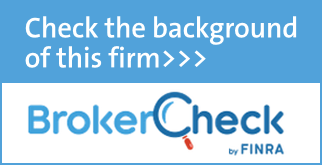If you run a small business, you’re always on the lookout for opportunities to cut costs and increase profitability. There are typically two ways you can achieve this: improve your business’ cost savings strategy and/or avoid incurring high costs that could impact your company’s future.
To help you get a better grasp on what cost savings vs. cost avoidance is, let’s review the definition of each.
What Are Cost Saving Measures?
Cost savings, also referred to as hard savings, involve any action on behalf of the company that helps reduce or eliminate an existing cost. Perhaps, you purchase a certain product or service from a vendor, but you’re able to renegotiate the price to a lower amount. Maybe, instead of using color on all your printers, you’ve switched to black and white printing. These are all considered cost savings for your company.
In fact, when you review your financial statements, you should be able to see a tangible cost reduction (savings) from previous statements.
Here’s another real world example: Recently, with more businesses allowing employees to work from home, you may have heard that certain companies are now moving to smaller offices or renegotiating their leases with landlords, as they no longer need to pay for a larger space to house employees during business hours. This is a major cost savings that you will be able to track and use as you plan next year’s budget.
What Is Cost Avoidance?
When you avoid something, chances are you never came in direct contact with it. What we mean is you didn’t put money down or have any type of investment in it. Cost avoidance differs from cost savings in this way. Rather than reduce the cost of an item or service you’re already paying for, you avoid paying the cost altogether. This is why cost avoidance is often referred to as “soft costs” or “indirect costs.”
This is because unlike cost savings, which you can quickly identify in your financial statements, cost avoidance isn’t typically quantifiable.
Examples of Cost Avoidance
Let’s say your business sees a lot of seasonal demand, so you plan to hire additional employees during the holidays. Upon further inspection of your current operations, you realize that if you allow the in-store checkout process to be completed on your customers’ smartphones vs. by register only, your existing team can handle the temporary surplus of customers.
This type of cost reduction will benefit your company in the future.
Let’s look at another example. Your company is considering whether to hire an outside vendor to perform a certain task or service that you can’t perform internally. However, one of your employees approaches you, letting you know that he or she is willing to learn how to perform this task but wants to know if you will pay for the education and training it will require.
In this scenario, you will be expected to pay a cost up front, but the long-term value it will provide your company in the future may be worth the one-time cost—as now you will avoid paying for a monthly or yearly expense to contract this work out.
How Can You Implement Cost Savings Measures?
As every business is unique, there is no one-size-fits-all approach to cost savings vs. cost avoidance. Often, it may be difficult to choose the best strategy that will save your company money now and in the future. If you’re looking for guidance and support on how to reduce costs and grow profits, Focus Financial can help.
Serving business professionals with an advanced suite of financial planning services, we’ll help you develop a comprehensive business strategy that allows you to reduce expenses, invest wisely, and avoid debt in the future.
To get your business on the best financial path forward, find an advisor near you today!


